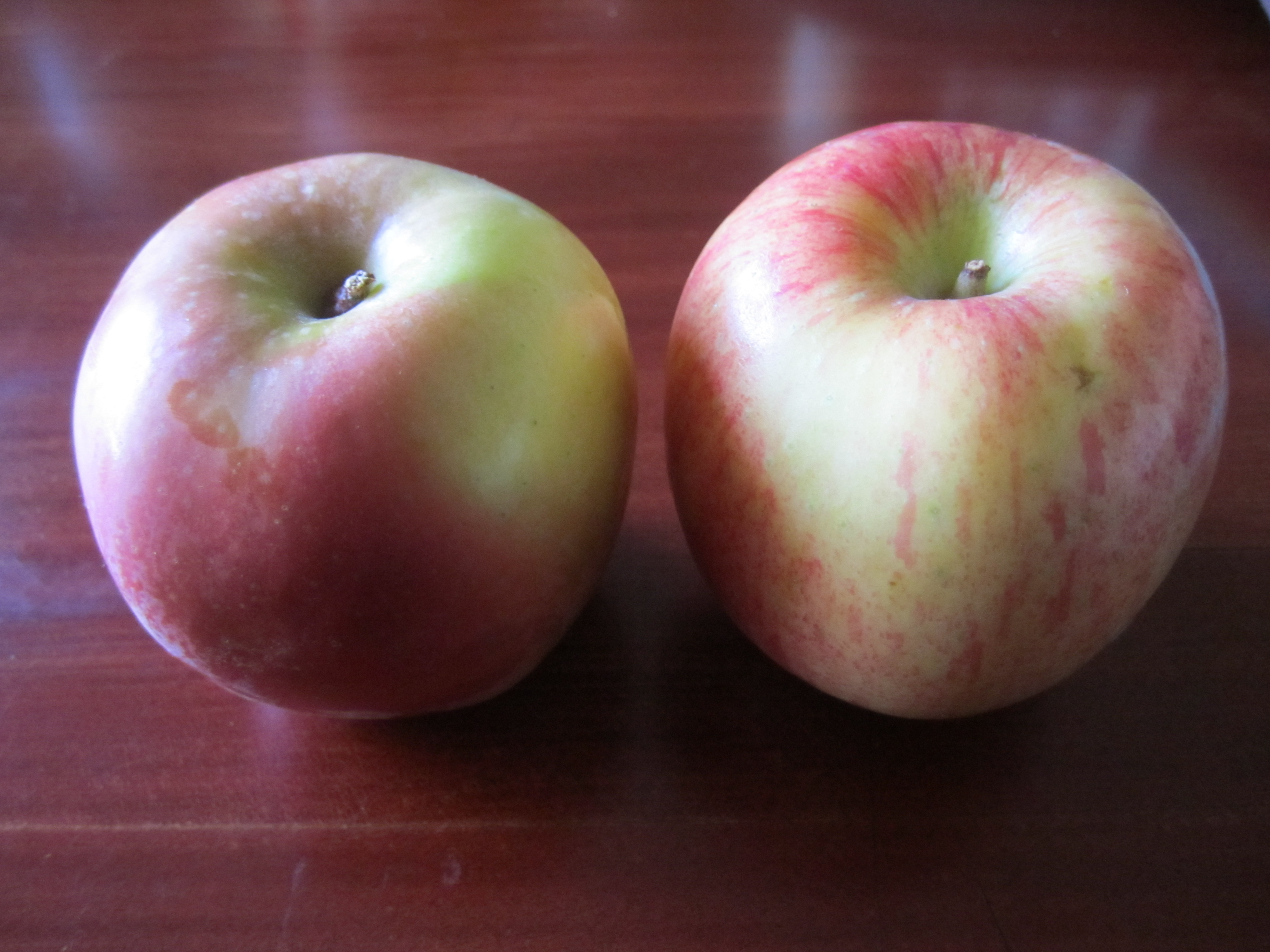The apple is one of the world’s best and most simple foods. It can be carried in a pocket or shipped around the world in a barrel, combining portability with durability, and the best examples can remain crispy, juicy, and sweet. Apples are packed with good vitamins, can refresh on a hot day and be baked into a pie on a cold one. Some apple varieties can last up to a year. Their juice can be good for kids, the fermented cider good for adults. In short, apples are an essential part of our human culture and diet. So why, until recently, has it been so incredibly difficult to get a good one?
Let’s start at the beginning. When apples were propagated and spread (perhaps by Johnny Appleseed), there were multiple varieties. Some were delicious hand fruit, others were inedible lumps fit only for pigs. With the twentieth century rise of the supermarket came a precipitous decline in the wonderful variety of apples in favor of one that could transport easily, maintain a deep red color and last almost forever: the Red Delicious. This apple was the bane of my childhood, a travesty of food that almost completely shut my mind to the idea of an apple as a tasty treat. For most of my life, Red Delicious has been the only apple available besides the tart Granny Smith. The name ‘Red Delicious’ is only half right. Its bright red skin can conceal many shortcomings like mealy texture, juiceless fruit, and a starchy flavorless taste. Eating a Red Delicious is drudgery, as it’s a poor representation of one of the world’s great fruits.
Then came the McIntosh. I had this apple when I was in my twenties and was awoken. Here was a fruit with a crisp crunch, pleasing tartness, and lingering sweet flavor that rewarded the mouth and spirit. I thought McIntosh was David against the Goliath of the Red Delicious. For years I sought it out, often finding it in a small pile in the back of the produce section.
Now I am married with two children and my wife, bless her heart, has grown up eating fruit for dessert. This forces me into buying massive amounts of fruit to keep her and my daughter, who has picked up the habit, happy and healthy. And month by month I’m seeing a transformation at our local grocery stores. The two pillars of the apple section, Red Delicious and Granny Smith, are being toppled by new varieties. It seems the American public has also awoken to the fact that Red Delicious is, frankly, a non-competitor when placed against new upstarts. This weekend I went to buy apples and found the following varieties on sale: Gala, Braeburn, Fuji, Kiku, Pink Lady, Pacific Rose, Honeycrisp, Pinata, Jazz, along with Red Delicious, Yellow Delicious, and Granny Smith. And this in a small local grocery chain! Of the over 7,000 varieties, more and more are becoming available. Just imagine only being able to buy one brand of cheap boxed wine and suddenly you learn there’s a whole world of wine out there. Oh, the possibilities! Last night we did a side-by-side taste test of Pink Lady and Kiku. Pink Lady is on the left.
Result? Pink Lady has a medium tart flavor that balances with mild sweetness, while the Kiku has incredible crunch and a sweet honey flavor. Both are excellent and next week we’ll be trying even more varieties. For lovers of tasty food, I’m pleased to announce the apple is back!


I agree. Red Delicious and Yellow Delicious are misnomers. In fact, they should just take them all out behind the grocery stores and smash them all into feed for pigs. Mealy and tasteless. I vote for Pink Lady, although I’ve never seen that Kiku and am willing to try. While we’re at it…could we keep the pesticides and wax off the apples?
I grew up in the northeast and it seem that we had an overabundance of the macintosh apples. They were a staple in my brown bag lunch. I have to agree with the poster above; my vote is for pink lady too.